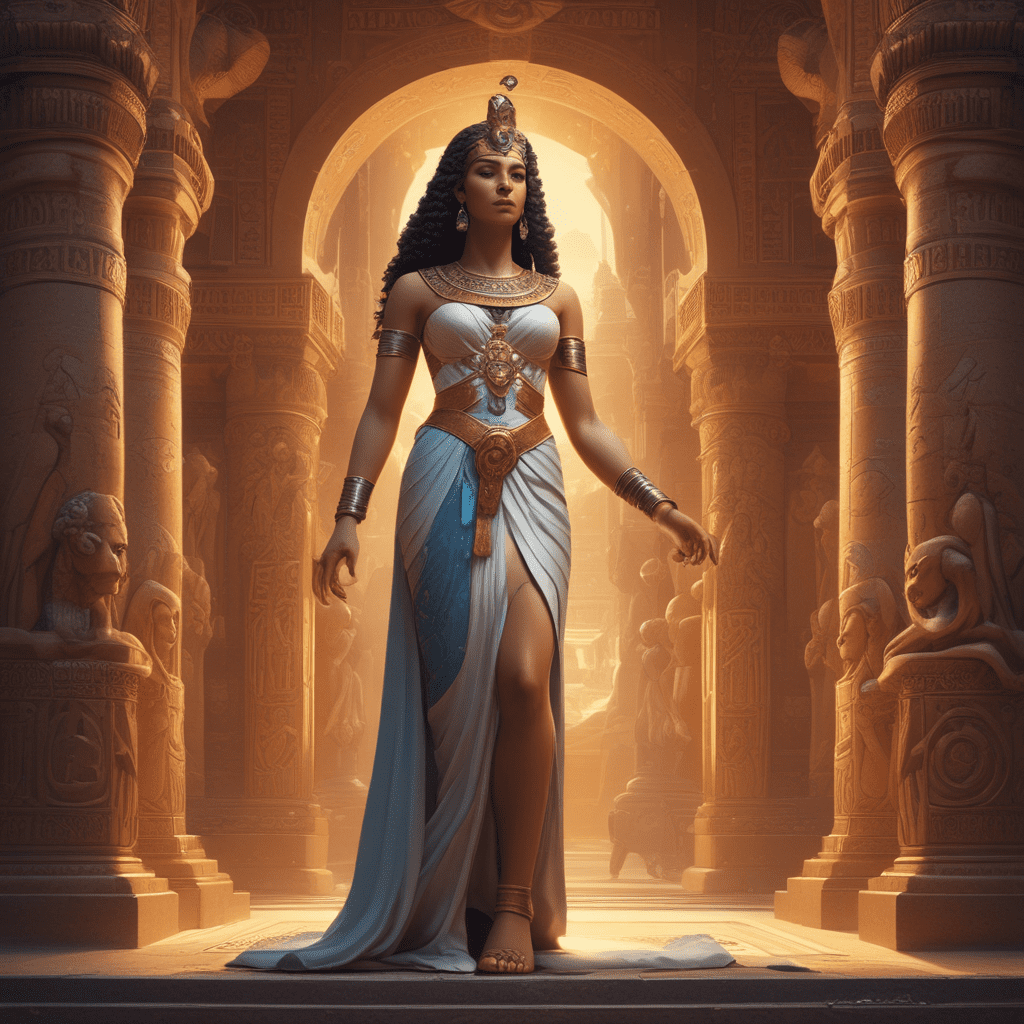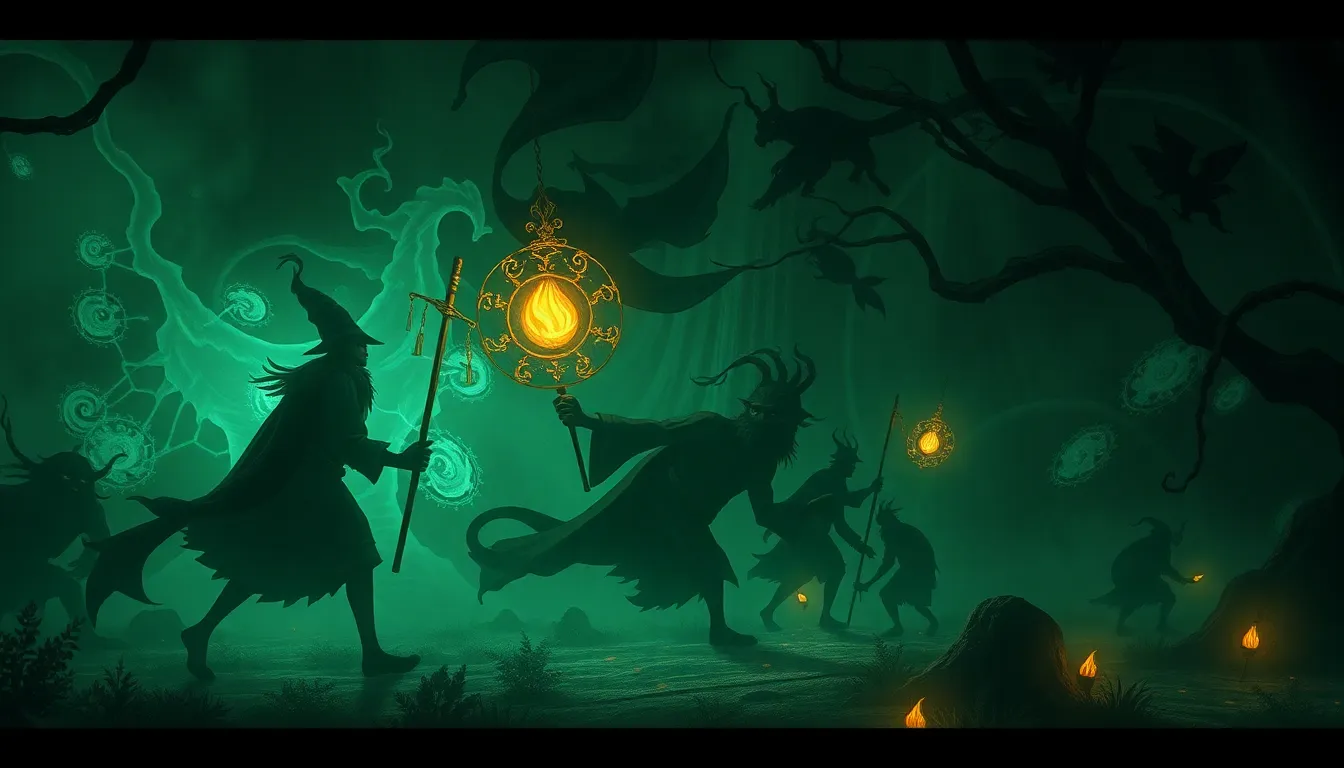The Underworld: A Mythical Journey into the Unknown
I. Introduction to the Underworld
The concept of the Underworld has fascinated humanity for millennia, serving as a critical component in various mythologies around the world. Defined as the realm of the dead, it holds significant cultural and spiritual importance. From ancient civilizations to modern interpretations, the Underworld symbolizes the unknown, the afterlife, and the consequences of one’s earthly deeds.
This article aims to explore the myths, cultural interpretations, and narratives surrounding the Underworld, shedding light on how different societies envision this mysterious realm and its implications for human existence.
II. Historical Perspectives on the Underworld
Throughout history, ancient civilizations developed their own beliefs and narratives about the Underworld, providing insights into their cultures and values.
A. Ancient civilizations and their beliefs
1. Mesopotamian views: The land of the dead
The Mesopotamian civilization viewed the Underworld as a dreary place, often described as a shadowy realm inhabited by the dead. It was believed that all souls, regardless of their deeds in life, descended to this underworld, known as Kur. Here, they faced a bleak existence, often depicted as a barren land ruled by the goddess Ereshkigal.
2. Egyptian mythology: Duat and the afterlife journey
In stark contrast, the ancient Egyptians had a more complex view of the afterlife. They believed in Duat, a realm where souls journeyed after death. This journey was fraught with challenges, where the deceased would face various trials and be judged by Osiris. Successful souls would be granted eternal life in the Field of Reeds, while those deemed unworthy faced a grim fate.
B. Greek and Roman interpretations
1. Hades and the concept of the soul
In Greek mythology, Hades, the god of the Underworld, ruled over the realm of the dead. Souls were guided to Hades by Charon, the ferryman, who transported them across the river Styx. The Greeks believed in a duality of fate, where souls could end up in different areas of the Underworld based on their lives, such as Tartarus for the wicked and Elysium for the virtuous.
2. The Elysian Fields: Reward and punishment
The Elysian Fields represented the ultimate reward for heroes and those who led righteous lives. This paradise was a place of eternal bliss, contrasting with the darker aspects of the Underworld where souls faced punishment.
III. The Underworld in World Mythologies
A. Norse mythology: Hel and the realms of the dead
Norse mythology introduces Hel, the goddess of the Underworld, who presides over those who die of illness or old age. Unlike the valorous warriors who ascend to Valhalla, most souls dwell in Hel, a cold and misty realm that reflects their unremarkable lives.
B. Hindu beliefs: Naraka and the cycle of rebirth
In Hinduism, the concept of the Underworld is intertwined with the cycle of rebirth. Naraka is a place where souls undergo purification for their sins before being reincarnated. This cyclical nature emphasizes the continuous journey of the soul through various forms of existence.
C. Indigenous cultures: Unique views on the afterlife
Indigenous cultures around the world have unique interpretations of the Underworld, often viewing it as a place where ancestors reside and interact with the living. For example, many Native American tribes believe in a spirit world that continues to influence the earthly realm.
IV. Symbolism and Themes Associated with the Underworld
A. Death and rebirth: The cyclical nature of life
The Underworld embodies themes of death and rebirth, highlighting the cyclical nature of existence. Many cultures view death not as an end but as a transition to another state of being.
B. The journey of the soul: Trials and tribulations
Myths often depict the journey of the soul as a series of trials that test the individual’s worthiness. These narratives reflect the struggles inherent in life and the ultimate quest for redemption.
C. The contrast of light and darkness
The Underworld serves as a metaphor for the duality of light and darkness, representing the choices individuals make and the consequences they face. This contrast is prevalent across cultures, emphasizing moral lessons and the importance of ethical living.
V. Archetypal Figures of the Underworld
A. Deities and guardians: Charon, Hades, and Anubis
Various deities serve as guardians of the Underworld across different mythologies:
- Charon: The ferryman of Hades, guiding souls across the river Styx.
- Hades: The ruler of the Greek Underworld, embodying the finality of death.
- Anubis: The Egyptian god of mummification and the afterlife, overseeing the judgment of souls.
B. The role of psychopomps in guiding souls
Psychopomps, like Charon and Anubis, play a crucial role in guiding souls through the transition of death, offering comfort and ensuring safe passage to the afterlife.
C. The significance of mythical heroes who ventured into the underworld
Mythical heroes such as Orpheus and Aeneas embarked on journeys to the Underworld, symbolizing the quest for knowledge, love, and redemption. Their tales illustrate the human desire to confront death and seek understanding beyond the mortal realm.
VI. Literary Representations of the Underworld
A. Epic tales: The Odyssey and Aeneid
Epic literature often explores the Underworld, with works like Homer’s “The Odyssey” and Virgil’s “Aeneid” depicting profound encounters with the dead. These narratives reveal insights into cultural beliefs about life after death and the hero’s journey.
B. Modern interpretations in literature and film
Contemporary literature and films continue to reimagine the Underworld, exploring themes of loss, redemption, and the human condition. Works such as “The Lovely Bones” and films like “What Dreams May Come” offer fresh perspectives on the afterlife.
C. The underworld as a metaphor in contemporary storytelling
In modern storytelling, the Underworld often symbolizes inner struggles, psychological battles, and the confrontation of one’s deepest fears and desires. This metaphorical use enriches narratives, allowing audiences to explore complex themes of existence.
VII. Psychological Interpretations of the Underworld
A. Carl Jung and the collective unconscious
Psychologist Carl Jung viewed the Underworld as a representation of the collective unconscious, a space where archetypal images and personal struggles reside. Jung believed that facing the Underworld is essential for personal growth and self-discovery.
B. The underworld as a representation of inner fears and desires
The Underworld serves as a powerful symbol of the human psyche, embodying fears, desires, and unresolved conflicts. Engaging with these themes can lead to greater self-awareness and healing.
C. Dreams and the symbolic nature of the underworld
Dreams often reflect elements of the Underworld, where individuals confront their anxieties and desires. The symbolic nature of the Underworld in dreams can provide insights into one’s emotional state and life challenges.
VIII. The Underworld in Art and Culture
A. Artistic representations throughout history
The Underworld has inspired countless artistic representations, from ancient frescoes to modern paintings. Artists have sought to capture the essence of the afterlife, exploring its beauty, terror, and mystery.
B. The influence of underworld themes in music and visual arts
Music and visual arts frequently draw on themes of the Underworld, reflecting societal views on death and the afterlife. Composers and artists utilize these motifs to evoke emotions and provoke thought about existence.
C. Festivals and rituals related to death and the afterlife
Many cultures celebrate festivals that honor the dead and acknowledge the significance of the Underworld. Examples include the Day of the Dead in Mexico and Obon in Japan, emphasizing the connection between the living and the deceased.
IX. The Underworld in Modern Society
A. Contemporary



